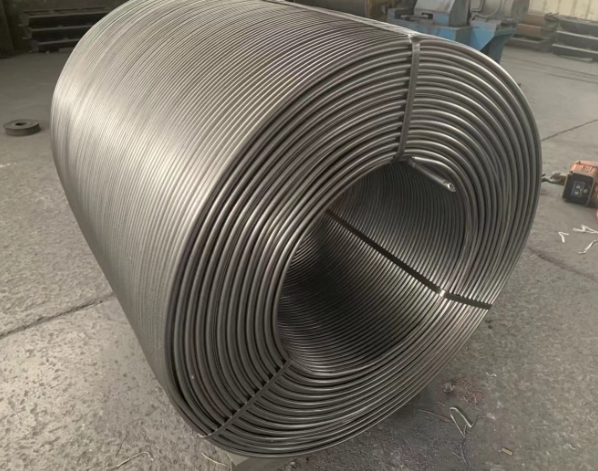
In the steelmaking process, molten steel is often further refined in a series of processes known as ladle refining or secondary steelmaking. In order to get the right product properties and increase metal recoveries, it is necessary to refine molten steel. Adding alloys in large quantities to steel melts or cored wires can help achieve this. The second approach is the preferred method, as it allows more precise additions to the steel and better control over its alloy composition.
Typical steelmaking cored wires are made of a cold-rolled low carbon strip on the outside and a cylinder of metal calcium inside. Edge rolling is used to wrap the cold-rolled strip of low carbon around the metal calcium cylinder. The resulting calcium cored wire has a very high mechanical strength and can be fed into the steel melt with the help of a wire feeder. It has many advantages over the traditional way of introducing alloys in the steel melt.
In the case of wires that are calcium cored, their temperature profiles in steel melts is lower. They also have a lower melting level than pure molten steeel. In turn, this reduces the damage they do to the surrounding melt of steel and the chance that it will be contaminated or deoxidized. Low slag volume means they can also be used to produce a finished end product or be processed further.

The outer cladding of the cored wire may be composed of stainless steel. Alternatively, it can consist of alumina, graphite and other materials. It may or may not be as abrasion-resistant as the core metal, depending on the type of material. The cladding can resist corrosion from the contact with the steel molten and prolong the life of cored wire. It can also improve cored wire's deposition rate. It is possible because claddings shield the wire core from slag, air and other particles that could interfere with weld metal deposition.
It is also possible to form the wire cladding into many different shapes. This allows for a wide range of welding applications. It is important to have a good finish on welds, like those made by robot welding. Moreover, it is possible to manufacture weld wires with a welded sheath, which provides even more protection against impact damage and other hazards. A sheath of stainless steel will prevent corrosion when a weld with a high strength is required. Sheaths of alumina protect welds from aggressive slags. A metal sheath is therefore the best choice when welding in harsh conditions, including those that are encountered during continuous operations.

Write a Message